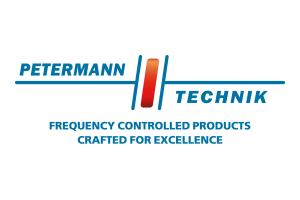Innovation in and from the EMS industry
From realizer to innovator
Are EMS companies dependent upon the innovative flair of their customers? “No,” agree the participants of the Markt&Technik Forum, “That was perhaps the case in 1980”. Today this is different.
the industry itself stands out for its flagship projects, and what’s more the head of the technical commission of ZVEI (German Electrical and Electronic Manufacturers‘ Association) comes from the EMS industry: Bernd Enser holds this position in addition to his full-time post as Vice President of the Automotive Segment at Sanmina and is well aware of the EMS industry’s lack of public visibility when it comes to the topic of “innovation”: “One problem is the lack of branding, because in the end we don‘t have a product that we ourselves market and sell”. Nevertheless, a great deal of direct and indirect innovation comes from the EMS sector. Optimization of processes, for example, is part of day-to-day business. “For example, we have developed a tool that enables us to calculate the ppm rate down to plus: minus 5 percent. Such possibilities put the customer in a position to improve his product accordingly,“ explains Enser. According to Roland Hollstein, Managing Director of Grundig Business Systems, redesigning an entire process requires the EMS provider to change from TS certification to IATS certification because this places completely new demands on processes. “I also view this as innovation management,” emphasizes Hollstein.
“Innovation comes to us from everywhere. It‘s not like just driving down the street and then turning off in the direction of innovation,” says Felix Timmermann, Executive Vice President of Asteelflash. Timmermann reports from the company‘s own employee suggestion exchange, whereby staff can put forward their ideas for innovations. If an idea comes to fruition, this is rewarded. As an example, Timmermann mentions forklifts that are used as markers for changeovers on the line, this came about at the suggestion of an employee.
According to Wolfgang Peter, responsible for business development at Elektron the company also offers bonuses for good ideas, for example when processes are made more efficient as a result of employee suggestions. This is how the Optical Control component counter was created, a classic example of innovation from the EMS industry. A promotional project was set up for the product and a subsidiary established within the Elektron Group to further develop and market it. “We were the first to launch such a product on the market,” emphasizes Peter. In the meantime, a number of competitors have jumped on the bandwagon. Proprietary electronic products are nevertheless rather rare in the EMS industry. Most EMS providers try to avoid presenting themselves as OEMs in order not to compete with their own customers. More common are ODM products from EMS, which can be modified as an intermediate product by customers and further adapted according to customer specifications.
Practical mechanical production aids can often be traced back to an invention from an EMS. Roland Holstein, for example, reports on an idea from his own staff that was implemented as the “BrushForm” PCB support system from Grundig Business Systems. This is a simple, cost-effective solution for PCB support in the SMT line. BrushForm is also suitable for use with sensitive printed circuit boards and for double-sided assembly and can be used in all conventional SMT assembly machines. In addition to the standard sizes, individual adaptations to the production line are also possible. The product has now been patented and, according to Hollstein, is selling well.
However, many new manufacturing processes are also developed in collaboration with, or even under the leadership of, an EMS: Together with partners, Neways has implemented a new technology for the lithographic structuring of printable precious metal pastes. This was conceived as a robust industrial solution for the miniaturization of electronic applications. A typical size reduction by a factor of 4 compared to conventional solutions can be achieved. “The industrialization phase of this innovation is currently underway, in as much as the efficiency of the process can be demonstrated in an industrial environment,“ explains Jörg Neukirch, Managing Director of Neways Vertriebs GmbH. The technology has proven itself in concept prototyping and small series production and is now available to key customers. Final release will follow when it becomes a fully qualified serial production process. Typical applications that already use this technology can be found in intelligent portable products, highly miniaturized sensors, photonic applications and high-speed data transceivers.
Research collaborations
Cooperation in research networks and with local colleges, universities and scientific institutes is already a living reality in the EMS world. Neways can attest to this with a large project in which the EMS and its development department are working as part of a European research network. Neways is working with the University of Valencia as well as the Port of Valencia on an IT project to optimize the combination of logistics with lighting and security technology. For example, the lighting in the port will be intelligently controlled and only operate when it is required.
Hollstein reports on his company’s cooperation with the University of Bayreuth and the Fraunhofer Institute on the subject of “materials science”. According to the head of Grundig Business Systems, this has resulted in a number of very interesting projects. Cms electronics is also happy to cooperate intensively with universities and research institutes from the Carinthia region in Austria. According to Bernd Juppe, Head of Sales and Marketing at cms electronics, the Austrian state even promotes investment in innovation through tax concessions.
EMS gets products DfX ready
“Today, the EMS industry is a beacon,” emphasizes Johann Weber, CEO of Zollner Elektronik. “We were always the customer‘s partner for series manufacturing, but now we also cover the entire lifecycle.” Weber cites the DfX process (DfX: Design for Excellence) as an example. “Here we need innovations to demonstrate our value to our customers. Our task is to create added value, and that includes innovation.” Depending on how you interpret it, DfX can include Design-for-Manufacturing, Design-for-Test and/or Design-for-Six Sigma. The focus however, is on the question of how a product can be so designed that it can be manufactured to a high process capability. “Innovation of many different kinds play a role and the EMS industry is an important hub in a network consisting of universities, trade associations, customers and suppliers”, says Weber.
Especially with DfX, many customers still have a lot of catching up to do because the bridge between development and production is often missing. Sometimes the development of a product is finished, but no one has thought about optimizing the design for manufacturability and testability. This kind of thinking may work well with very simple products, but not with highly complex systems. In this respect, the EMS is often the element in the supply chain that makes the production of an OEM product possible in the first place. “We in the EMS industry often have to deploy all of our innovative capabilities to build the customers’ products in the first place, because sometimes the designs are not optimal,” explains Andreas Kraus, Managing Director of Kraus Hardware. “With every new customer or developer we basically have to discuss again from the beginning what one should do and what one shouldn’t do”.
Innovation is often created in or through cooperation between electronics service providers and start-up companies. “Young companies such as these benefit greatly from the fact that we are innovative,” says Jürgen Seibert, Vice President of Sanmina. Start-ups are often characterized by the fact that they have cool ideas, but little or no experience with electronic manufacturing. EMS companies are very willing to step into the breach and take over the development, production and perhaps also the After Market services. The support of start-ups has meanwhile developed into a basic pillar of business strategy for electronics service providers. There are hardly any EMS providers who do not rely on this model. “This means that a healthy start-up landscape in Germany and Central Europe is important for us,” explains Seibert. At the end of the day, however, this does very little to increase market visibility of the EMS industry as a driver of innovation. Non-disclosure agreements often prevent public communication of projects when working with start-ups.





